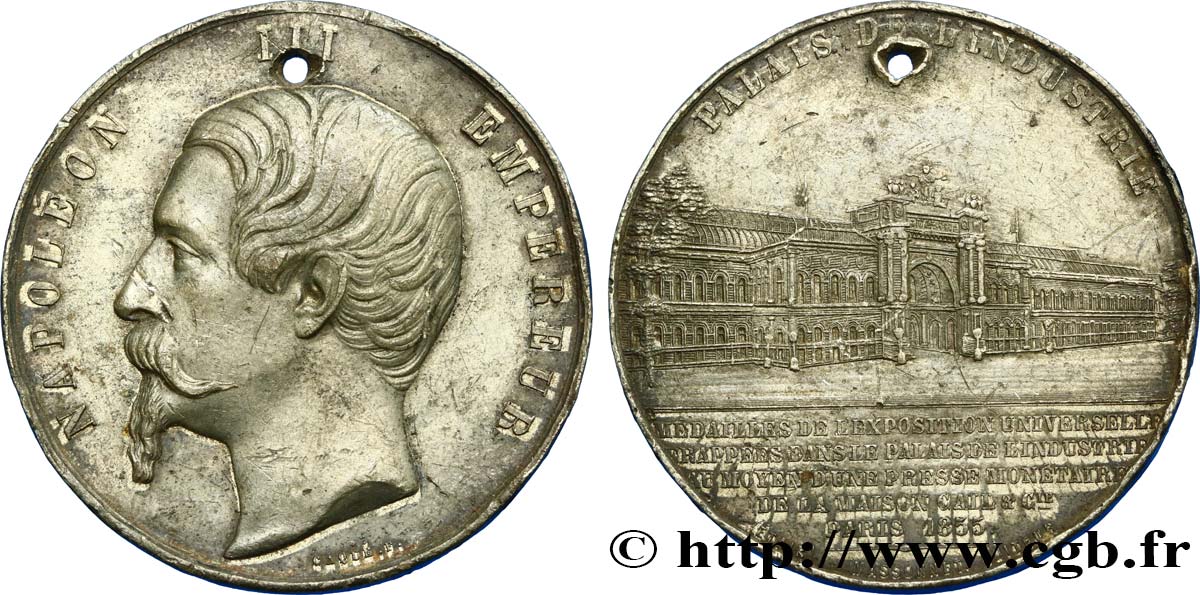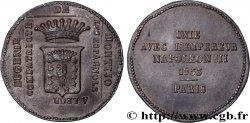E-auction 263-185981 - fme_447002 - SECOND EMPIRE Médaille du Palais de l’Industrie
You must signin and be an approved bidder to bid, LOGIN TO BID. Accounts are subject to approval and the approval process takes place within 48 hours. Do not wait until the day a sale closes to register. Clicking on « bid » constitutes acceptance of the terms of use of cgb.fr private e-auctions.
Bids must be placed in whole Euro amounts only. The sale will start closing at the time stated on the item description; any bids received at the site after the closing time will not be executed. Transmission times may vary and bids could be rejected if you wait until the last second. For further information ckeck the E-auctions F.A.Q.
NO BUYER'S FEE.
NO BUYER'S FEE.
| Estimate : | 60 € |
| Price : | 7 € |
| Maximum bid : | 12 € |
| End of the sale : | 30 April 2018 18:38:30 |
| bidders : | 4 bidders |
Type : Médaille du Palais de l’Industrie
Date: 1855
Mint name / Town : 75 - Paris
Metal : tin
Diameter : 45,4 mm
Orientation dies : 12 h.
Engraver CAQUÉ Armand Auguste (1795-1881)
Weight : 47,65 g.
Edge : lisse
Coments on the condition:
Médaille avec une patine grise et une perforation à midi
Obverse
Obverse legend : NAPOLÉON III EMPEREUR.
Obverse description : Tête nue de Napoléon III à gauche.
Reverse
Reverse legend : PALAIS DE L’INDUSTRIE // MÉDAILLE DE L'EXPOSITION UNIVERSELLE / FRAPPÉE DANS LE PALAIS DE L'INDUSTRIE / AU MOYEN D'UNE PRESSE MONÉTAIRE / DE LA MAISON CALL ET CIE / PARIS 1855.
Reverse description : Vue de l’entrée du Palais de l’Industrie ; légende en 5 lignes à l’exergue.
Commentary
Intéressant témoignage pour ce souvenir frappé au sein même du Palais de l’Industrie, par Massonnet Éditeur.
Le Palais de l'Industrie et des Beaux-arts, ou plus communément Palais de l'Industrie, est un édifice construit pour l'Exposition universelle de 1855 sur les Champs-Élysées à Paris. Il est l'œuvre de l'architecte Victor Viel et de l'ingénieur Alexis Barrault. Il est détruit à partir de 1896 pour laisser place au Petit Palais et au Grand Palais..
Le Palais de l'Industrie et des Beaux-arts, ou plus communément Palais de l'Industrie, est un édifice construit pour l'Exposition universelle de 1855 sur les Champs-Élysées à Paris. Il est l'œuvre de l'architecte Victor Viel et de l'ingénieur Alexis Barrault. Il est détruit à partir de 1896 pour laisser place au Petit Palais et au Grand Palais..








 Report a mistake
Report a mistake Print the page
Print the page Share my selection
Share my selection Ask a question
Ask a question Consign / sell
Consign / sell
 Full data
Full data









